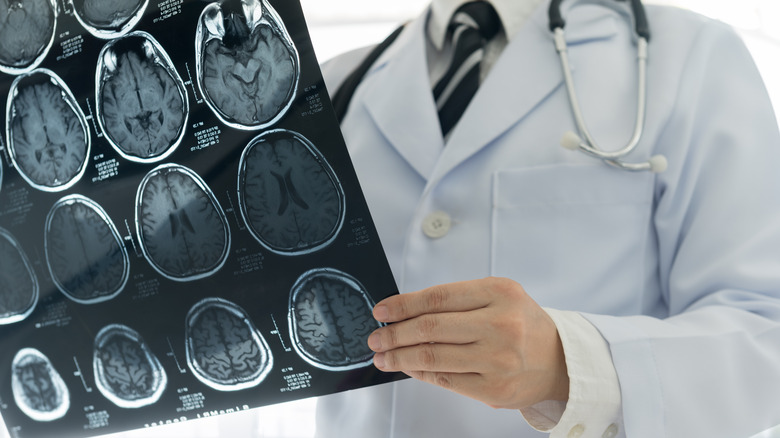The Big Difference Between A Stroke And An Aneurysm
Strokes and aneurysms are serious conditions that involve blood flow and the brain, but they are not the same thing. Strokes are the fifth cause of death in the U.S., according to the American Stroke Association, and more than 795,000 people in the country experience a stroke every year (via Centers for Disease Control and Prevention). Ruptured aneurysms are not as common, with roughly 30,000 people being diagnosed yearly, per Cleveland Clinic.
A stroke occurs when the brain does not get enough blood. When the blood supply to the brain is cut off due to a ruptured blood vessel, it is called a hemorrhagic stroke. When blood is blocked by a blood clot in an artery, it is called an ischemic stroke. When the brain loses blood, it loses oxygen as well, and this lack of oxygen causes brain cells to die. A lack of blood flow to certain areas of the brain can result in some body parts losing functionality, according to the American Stroke Association.
Aneurysms can occur in places other than the brain
Unlike strokes, aneurysms are not limited to the brain, and they are not caused by a lack of blood. In fact, brain, or aortic, aneurysms are the result of too much blood in the brain. Other areas of the body that can experience aneurysms are the heart, behind the knee, in the intestine, and the spleen. Aneurysms occur when an artery becomes weak and begins to widen or stretch out. When blood vessels become too stretched out, they sometimes rupture, causing bleeding in the brain, which can lead to a stroke. Because aneurysms vary in size, smaller ones may never rupture (via Johns Hopkins Medicine).
Blood leaking into the brain is life-threatening, so it is important to get medical care quickly. Symptoms of a burst aneurysm include headaches, eye pain, and changes in vision. Other symptoms include a stiff neck, a sudden and painful headache, nausea, high blood pressure, and loss of balance or coordination, per Johns Hopkins Medicine. Aneurysms are detected by MRI, CT scans, and angiograms after a patient has experienced symptoms, according to Cleveland Clinic.


